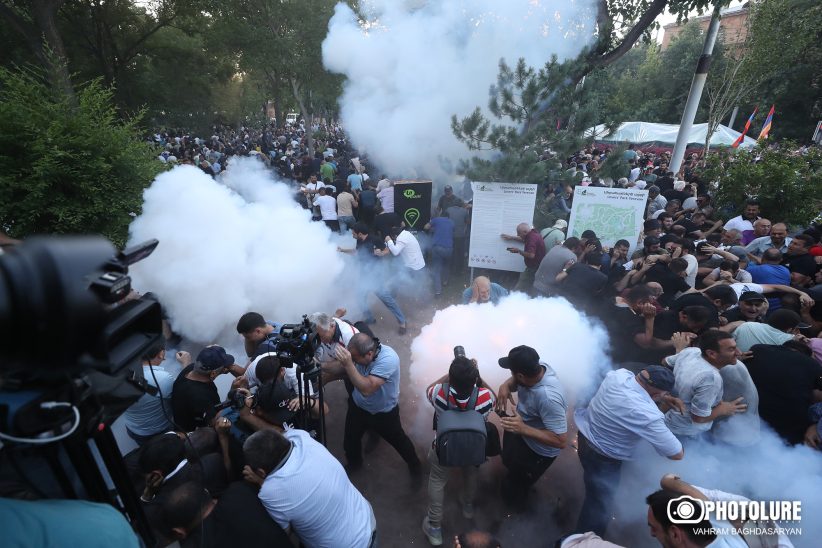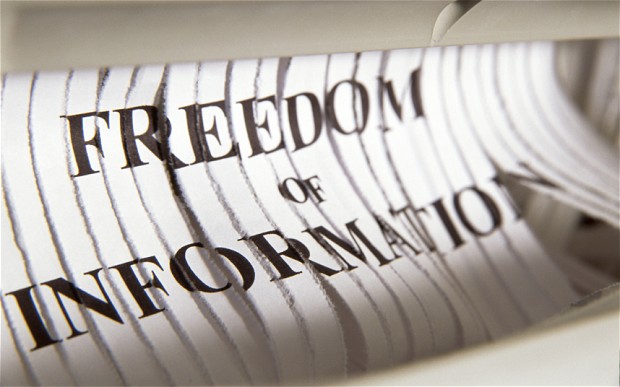2018 was an intense and complicated period for the Armenian media outlets, the reason being the velvet revolution that took place in the country and related to it political developments, including snap elections to the Yerevan City Council and to the RA National Assembly.
Monitoring of the previous years show, that under the conditions of important processes that take place in the domestic political life, especially the tension, which occurs during the elections, tension over the media, the number of cases of violating their rights is increasing. In 2018, majority of such cases were recorded in April, during the most heated period of the velvet revolution. During that period, the CPFE recorded 18 cases of physical violence against media representatives and eight cases of impeding their professional activity. The wave of attack and pressure on journalists stopped after Serzh Sargsyan’s resignation. Criminal cases were filed only in 15 out of 26 recorded incidents; only four of them went to court, of which only in relation of three a decision was made.
In terms of snap elections to the Yerevan City Council and to the NA, they were significantly different from all the previous ones not only with the level of freedom, justice and transparency, but also in terms of unconstrained operation by the journalists and media outlets. Unlike the formed fallacious tradition, when elections were coupled with a number of violations of the rights of the media employees, this time there were few of them. During the elections to the Yerevan City Council one case of violence and on case of impeding professional activity were recorded; on the day of elections to the NA, there was not even an attempt to use force against the journalists and cameramen, but three cases of impeding professional activity were recorded of which two were resolved on site, and one was sent for investigation.
In general, in 2018 the CPFE recorded 21 cases pf physical violence against journalists, 67 cases of various types of pressure on media and their employees and 98 cases of violating the right to receive and disseminate information.
During the post-revolutionary period, serious concern was created by the search and seizure of equipment by the law enforcement bodies at the editorial office of the “Yerevan.today” news site, and during the pre-election period, concern was created by the illegal actions at “News.am” and “Aysor.am”, where they were required to show videos and “grounds” for the publications. While referring to these facts, the CPFE, along with partner organizations, made a statement and called for the new authorities to take actions to keep the media free from illegal actions by the police and to create more favorable conditions for the journalists and the media outlets to operate freely, irrespective of their political affiliation.
During the heated political struggle as a result of revolution, the speech of hatred, insult and slander became widely spread in the social media. Representatives of various political powers, media outlets, non-governmental organizations and international institutions expressed their concerns in this respect. The problem became a subject matter of public discussions, one of which was initiated by the Committee to Protect Freedom of Expression jointly with the Delegation of the European Union in Armenia on the eve of the campaign for the parliamentary elections. Although during the post-election period the scope of the speech of hatred in the social media significantly decreased, it is too early to consider the situation as good.
It is noteworthy, that in 2018, 13 new claims were brought to court against the media outlets and journalists, and they all are under Article 1087.1 of the RA Civil Code, i.e. insult and slander. It should be noted that among the claimants are RA second president Robert Kocharyan, Deputy Prime-Minister Tigran Avinyan, as well as there are cases when one media outlet sued another one, moreover, in case of one it is related to a post by a journalist on Facebook.
During the year, in relation to resolved court cases nine decisions were made to the detriment of the media outlets and journalists, and ten decisions in their favor.
During 2018, the CPFE continued to monitor criminal cases related to the events in Baghramyan Ave. on June 23, 2015 (#ElectricYerevan) and in Khorenatsi Street and Sari Tagh in the second half of July 2016, which were coupled with impediments of professional activity and mass violence against the journalists and the cameramen. No significant progress was recorded in either of the cases; no new defendants or event suspect have been identified, which proves the inefficiency of the pre-investigation. Moreover, on September 25, the Special investigate e service stopped the proceeding of the case related to “Sari tagh”, with the reason that “the person engaged as the defendant is unknown”. With the support from the CPFE, two of the journalists recognized as case-related victims, Mariam Grigoryan from “1in.am” and photo-journalists Gevorg Ghazaryan appealed the decision by SIS to the prosecutor’s office, and after being rejected, they turned to court. The case is current.
During the post-revolutionary period, the media outlets complained of the problems related to receiving information of public importance from the state agencies. In this respect the data by the CPFE also speak of the aggravation of the situation. Although the head of the new Government and some members sometimes go live on their Facebook pages and tell about current activities and future actions, as well as express their opinion about the most important problems, it cannot fully replace the work of the press secretaries and the department of the public relations.
During the 2018, and especially after the velvet revolution, certain rearrangements took place in the field of media outlets. Firstly, it was the result of RPA leaving the position of the authorities and reducing or stopping the funding of their own media outlets. Noticeable impact on this process was made by the return of the RA second president Robert Kocharyan to politics, after which a number of media outlets were linked to his name. In this respect, noteworthy was the sale of the “Ararat” TV company, affiliated to RPA, and turning it into “Channel 5” with completely different political orientation. At the end of the years, we learned about the change of the owner of the “ArmNews” TV Company. This processes have the tendency to continue and, quite probably, will also include printed and online media. In particular, “Hayots Ashkharh” daily will stop being issued in 2019 because of financial reasons.
In 2018, one of the most serious problems in the field of broadcasting remained unsolved, i.e. the problem of creating a private multiplex. On December 28, the TV and radio Commission announced failed the tender which started on June 23, as no application was submitted during the defined period. This is the third tender without results; the previous two were held in 2016 and 2017, however they had no applicants. The CPFE and partner organizations have mentioned a number of times that the terms and requirements stipulated by the law “On TV and radio” to create a private digital network for broadcasting, i.e. a multiplex, are unacceptable: they are not attractive from business perspective and are not promising in terms of the development of this field. However, the TVRC, ignoring the essence of the problem, organizes tenders of formal nature, which are destined to fail from the very start.
Unlike the field of broadcasting, the Armenian online media has noticeably improved its positions. On November 1, the “Freedom House” human rights organization published a report “Freedom on the Net in 2018” in which Armenia moved from list of the countries with “partially free” Internet to the list of the “free”. The authors of the document mention that this improvement is directly connected with the “velvet revolution” during which the citizens actively used the social media platforms, communications applications and live streams on the Internet.








